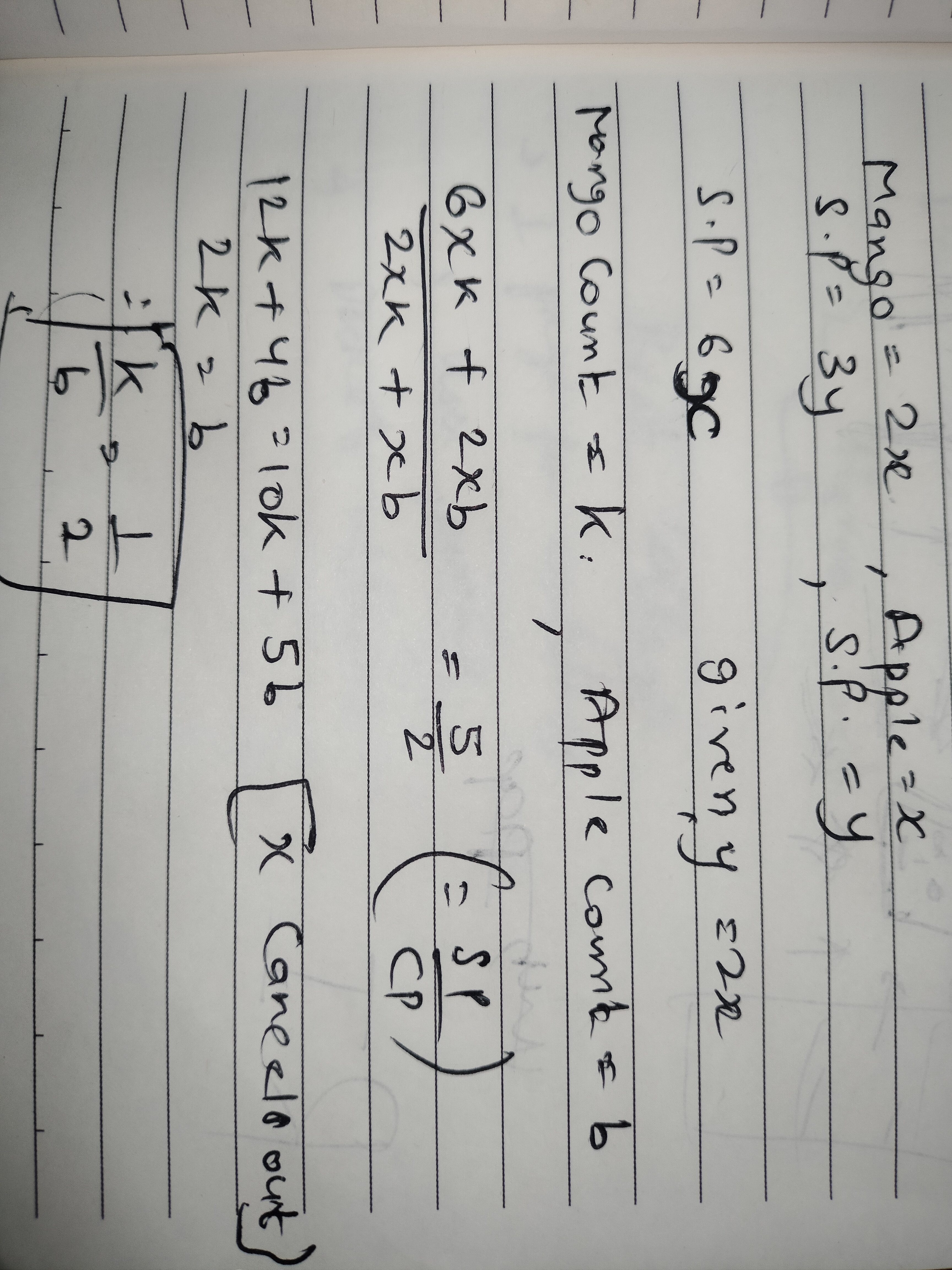Started 3 weeks ago by Gourav Sharma in
A person buys some apples and mangoes from the market. Cost price of a mango is twice that of an apple and the selling price of a mango is thrice that of an apple. By selling an apple at twice its cost price, he makes 150% profit on the whole. Find the ratio of the number of mangoes to that of apples that he bought from the market.
Body

7 Replies
-
Replied 3 months ago
I hope this helps you, please close the ticket if your query has been resolved.
Replied 3 months ago
in mango there is a profit of 200% in apple profit is 100% given that in whole profit is 150%.then why with alligations its giving 1:1.
Replied 3 months ago
in mango there is a profit of 200% in apple profit is 100% given that in whole profit is 150%.then why with alligations its giving 1:1.
Replied 3 months ago
Bcoz cost prices are different so we will be getting different quantities, if cost price would have been same then it must have been equal quantities.
Replied 3 weeks ago
Not getting the answer. A person buys some apples and mangoes from the market. Cost price of a mango is twice that of an apple and the selling price of a mango is thrice that of an apple. By selling an apple at twice its cost price, he makes 150% profit on the whole. Find the ratio of the number of mangoes to that of apples that he bought from the market.
Replied 3 weeks ago
Not getting the answer. A person buys some apples and mangoes from the market. Cost price of a mango is twice that of an apple and the selling price of a mango is thrice that of an apple. By selling an apple at twice its cost price, he makes 150% profit on the whole. Find the ratio of the number of mangoes to that of apples that he bought from the market.

